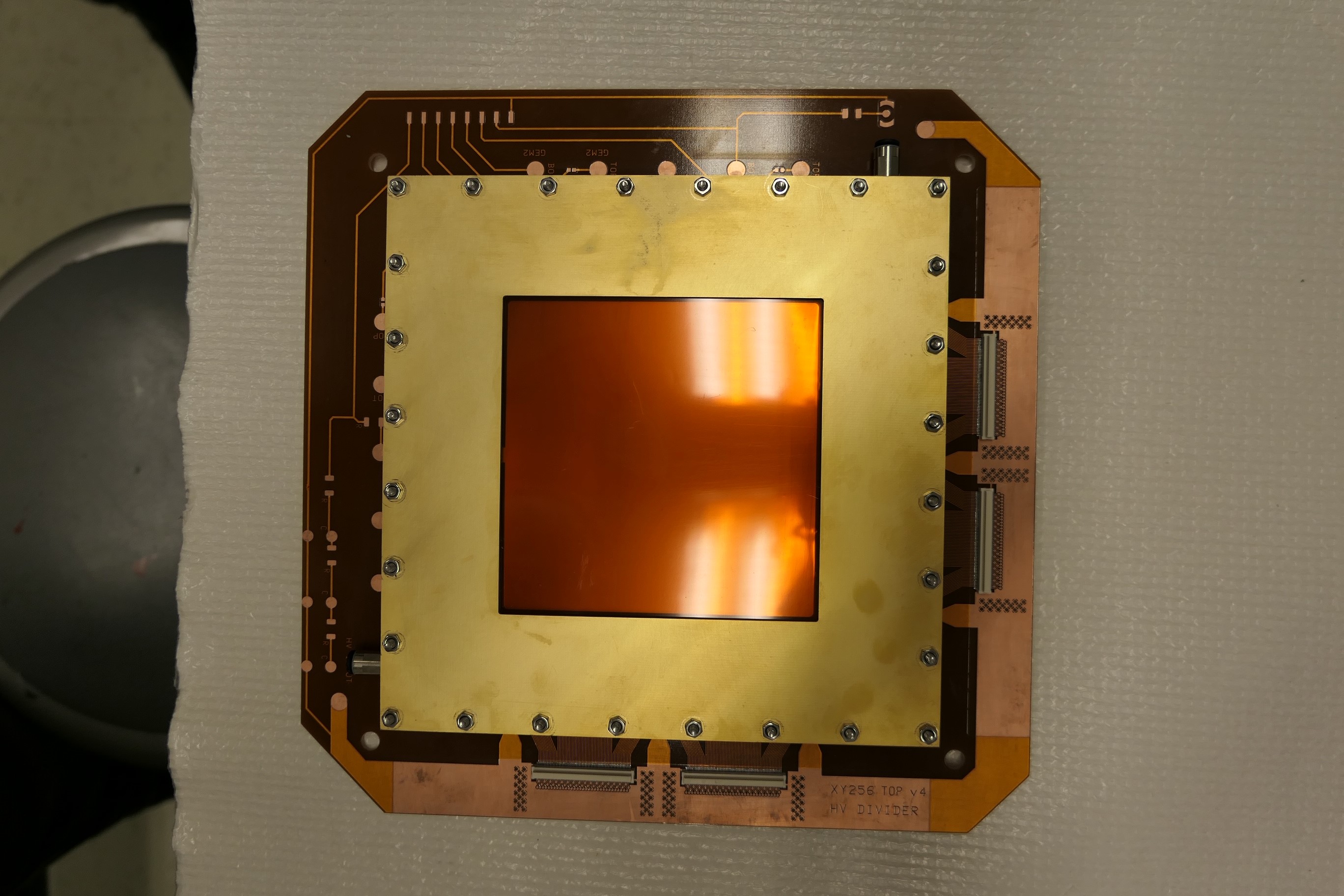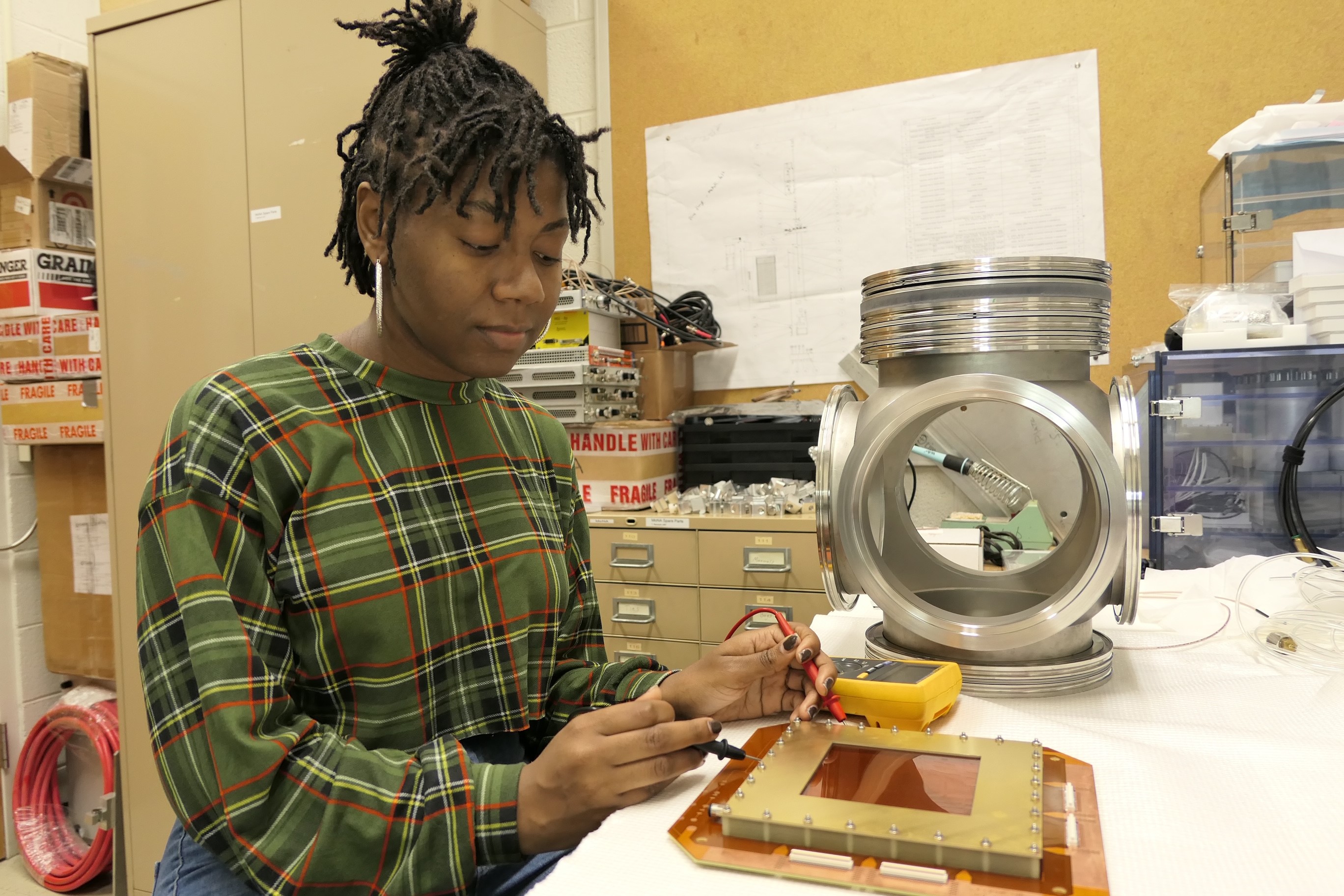Summers spent growing up at science-themed camps have made a lasting impression on Michigan State University junior Maya Watts. She credits these early days in science camps with her love of physics.
2019-2020 Jefferson Science Associates Minority/Female Undergraduate Research Assistantship Recipient Credits Early Exposure to Science for Career Aspirations
NEWPORT NEWS, VA – Summers spent growing up at science-themed camps have made a lasting impression on Michigan State University junior Maya Watts. She credits these early days in science camps with her love of physics. Now, as the 2019-2020 Jefferson Science Associates Minority/Female Undergraduate Research Assistantship (JSA M/FURA) recipient, Watts is pursuing a career in the field she loves.
As an only child, Watts looks fondly upon the summer camp experiences her parents provided for her while they worked—her mother as a lawyer and her father as an engineer. Yet, she admits, summer camps at the Detroit Science Center and Detroit Zoo were merely the start of her interest in science.
As a high school student, Watts recalls being particularly motivated to learn about outer space from her physics teacher. In fact, Watts notes, like her, she’s learned that many of the working physicists that she’s met were inspired to learn more about the field because of their high school physics teachers.
“Before 11th grade physics, I thought maybe I’d go into engineering or become a doctor,” Watts says. “I had a really good physics teacher and I started watching YouTube videos and discovered how little we know about our universe. I realized there was an opportunity to learn more.”
When curiosity and hard work meet “luck”
Then, while in 12th grade, Watts visited the MSU National Superconducting Cyclotron Laboratory during a community-wide open house. As chance would have it, she and her mother arrived late for the event and met the lab director, Thomas Glasmacher, in the parking lot. Watts seized the opportunity to tell Glasmacher of her interest in the lab and let him know she would be enrolling in the MSU Honors College the following year. The two kept in touch and once Watts matriculated, Glasmacher connected her with her advisor and ensured she had the resources she needed to get a strong start in the department.
“I got lucky,” Watts admits of her meeting with Glasmacher. “I got a research opportunity as a freshman. I think he saw my passion and recognized that I wanted to learn more. He put me in touch with one of the scientists who put me on a project right away.”
While Watts credits much of her achievements to luck and educational opportunities her parents provided, others are far more eager to recognize Watts for her own merits.
“Maya has done extremely well and seems to be a very focused, trustworthy and dedicated person,” says Paul Gueye, who is also Watts’ advisor at MSU and has conducted research at the Department of Energy’s Thomas Jefferson National Accelerator Facility since 1995. “I can brag about Maya for days. She’s fantastic. She’s somebody that I have no doubt will do extremely well. She’s one of those people that has that unique ability to blossom in any environment.”
Work with the MSU National Superconducting Cyclotron Laboratory
Now, thanks to the JSA M/FURA, Watts will have the chance to shine in her chosen field of study.
The assistantship is supported by the JSA Initiatives Fund Program, funded annually by JSA’s owners, Southeastern Universities Research Association and PAE Applied Technologies. Initiatives funds are awarded every year to support activities that further the scientific outreach, and promote the science, education and technology missions of Jefferson Lab.
With the assistantship from Jefferson Lab, Watts and her team are constructing neutron detectors.
“With this award, we have funding for some research projects that we didn’t have the funding to do before,” Watts says.
One of those projects is the development of a unique neutron detector for the Modular Neutron Array (MoNA) collaboration. MoNA consists of a device called a scintillator that emits light when a particle hits it. When coupled with a position-sensitive gaseous photomultiplier based on the Gas Electron Multiplier (GEM), more precise information about particles can be detected. The GEM detector technology has come into wider use recently at Jefferson Lab and elsewhere. They are more flexible than some other commonly used technologies and can be arranged in unique formations to detect more particle events.
“To the physics community, having these instruments means that we will be able to see events that we were not able to see before,” says Gueye. “We will be able to see a new type of physics, while improving what we have already.”
Gueye notes that the technology also has other implications in medicine and security, because scientists will be able to get more accurate images of specific sites, which can be used in applications such as disease detection and surgery.
What needs to be optimized
The team is conducting several tests of the components of the detector during the spring of 2020. “By the spring, we will have some understanding of what needs to be optimized,” says Gueye. “There’s a chance that we may have a complete design and a good fraction of the prototype completed by the end of the spring semester.”
Gueye also notes that he and Watts are working hard on the team’s current version of the prototype and hope to present details about it at the American Physical Society April meeting in Washington, DC, on April 18-21, 2020.
Both Watts and Gueye have expressed their appreciation of the opportunity to work on the project with support from the JSA M/FURA. The assistantship program is currently accepting nominations for the 2020-2021 academic year for minority or female undergraduate students who wish to work on projects that are either part of the lab's research program or directly related to the scientific or engineering aspects of the program.
Those interested in nominating a student for the program can visit the assistantship webpage for more information.
By Carrie Rogers
Contact: Jefferson Lab Communications Office, jlabinfo@jlab.org, 757-269-7689
Further Reading
JSA Minority/Female Undergraduate Research Assistantship
Michigan State University National Superconducting Cyclotron Laboratory




